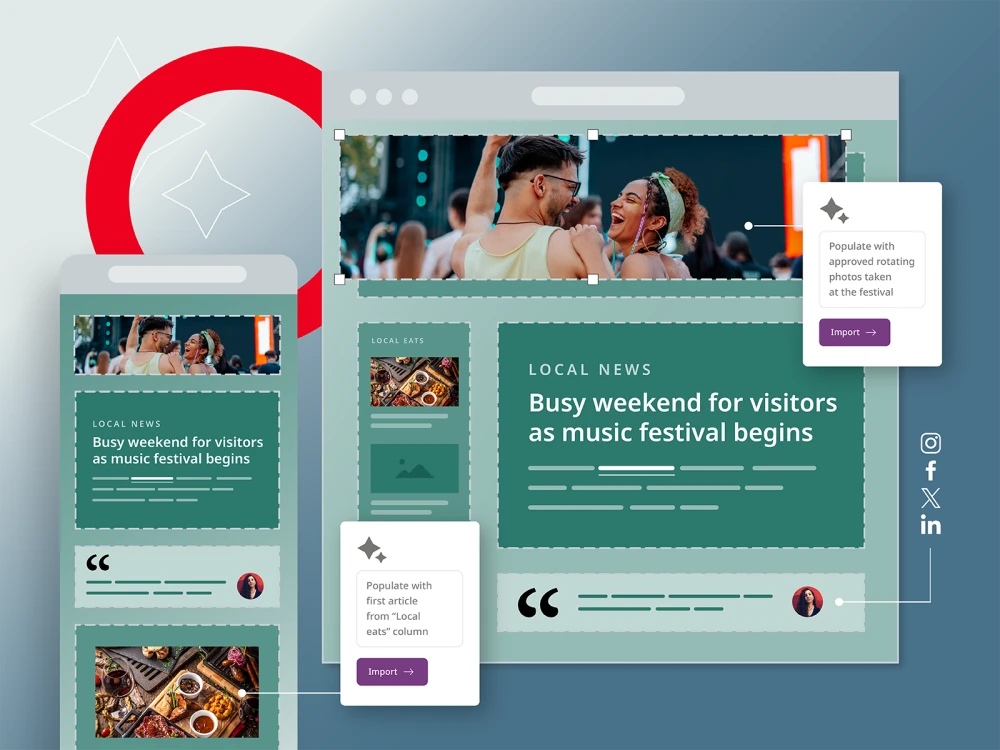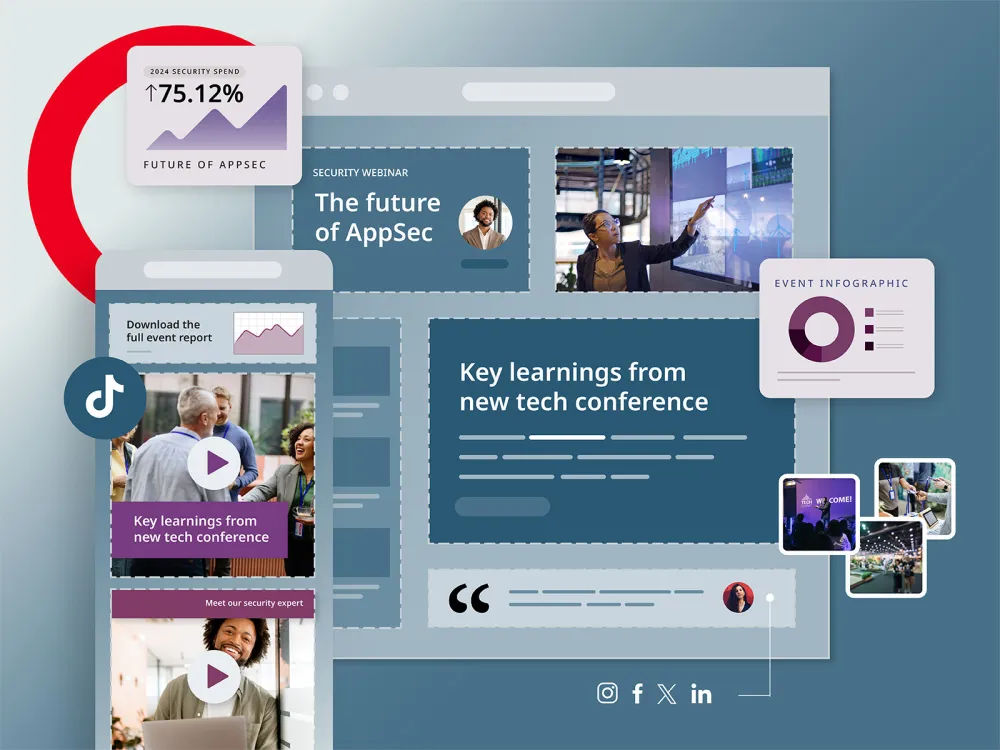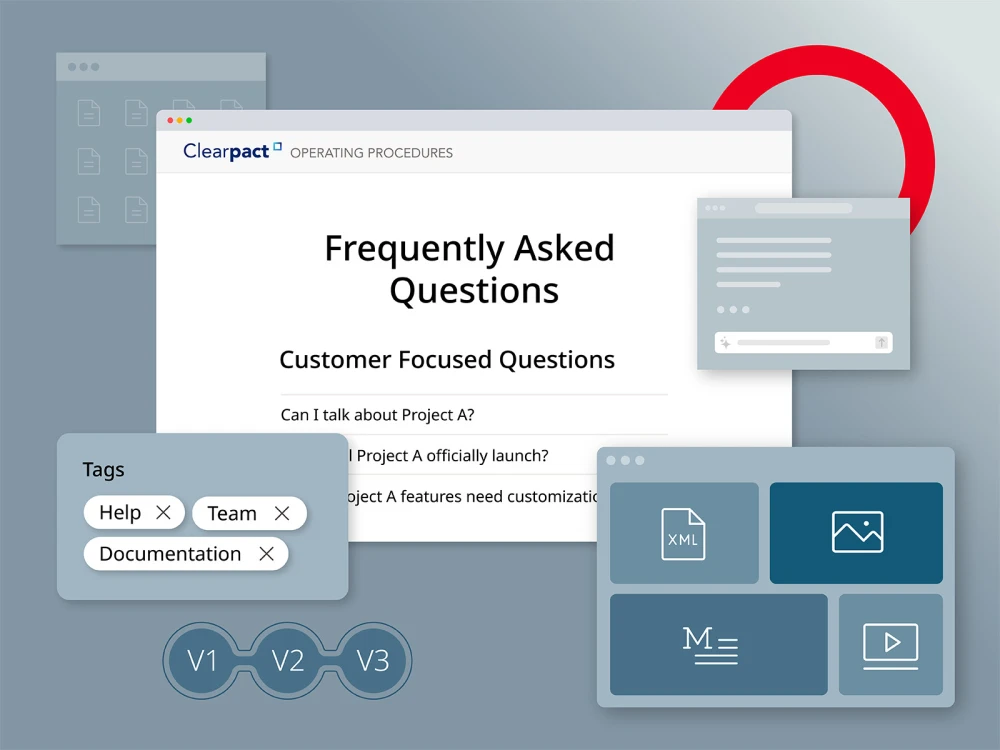Content teams are constantly balancing the need for speed, accuracy and consistency as they produce material across multiple platforms. Modular content helps streamline this process by enabling teams to create reusable content blocks that can be adapted for different contexts without starting from scratch. Whether it’s a news publisher ensuring quotes remain accurate, a life sciences company maintaining regulatory-approved messaging or a global consultancy managing localized content, Brightspot CMS makes modular content work seamlessly. Let’s explore five real-world examples of how organizations are using this approach to improve efficiency and content quality.
Seminaries and institutes
Seminaries and institutes push out large amounts of learning content to their audiences, which often feature things like phrases from religious writing.
These phrases are often reused hundreds of times, and each usage must therefore be consistent.
On top of that, these types of organizations may have audiences that live all around the world, requiring translations for some content so that it is easily understandable for their users.
Without modular content
Without modular content, an editorial team member may have to read through the text, find the appropriate phrase, and type it into the topic they are writing, either manually or by copying and pasting from another source of information.
This must happen each time a piece of content is created, meaning multiple editorial team members will be going through this process potentially many times a day. Depending on how much content this team produces, the same process could need to be repeated hundreds if not thousands of times a year.
Each piece of content—and the phrases within them—might also have to be translated for each audience in a one-off way.
The challenges they face are then:
- Maintaining consistency with phrases across all content
- Reducing time that goes into ensuring each phrase is accurate across all content
- Ensuring all content is in the right language for the right audience
With modular content
With a modular approach, editorial teams can begin by simply loading the phrase into the CMS once.
After that, they can use a workflow to ensure it gets translated to each language it needs to be translated in. This workflow will also help ensure the right eyes are on the phrase to make sure it is accurate.
After that, editorial team members can simply insert that modular content into whichever content piece they are writing and move on with other parts of their process.
The challenges modular content solves are then:
- Phrases are now consistent and will remain consistent across all content
- Significant time is saved since team members no longer have to manually type in the phrase
- All translations of the phrase that are required are readily available for use, no matter the language that the audience speaks
News media publishers
These days, it’s easy to see how much content media companies are under pressure to produce on a daily basis. Trying to keep up with the sheer amount of breaking news is a challenge in itself.
Imagine being a news organization covering a speech that an official makes about an important legislation; many quotes from this speech—and even parts of the legislation itself—will have to be pulled out and used in multiple pieces of content in a single day, week, or even beyond that.
Without modular content
These kinds of quotes—whether they are from speeches, interviews, or from legislation—take time to extract from the source material.
If it’s a quote, the reporter will have to transcribe it; if it’s legislation, the reporter will have to sift through legal language to find the right part.
This must be done each time a new article or live feed post is created. If any parts of the source are misquoted or misunderstood, the legitimacy of the news organization takes a hit. The stakes are high, and the deadlines are tight.
The challenges news organizations face are then:
- Ensuring accuracy of the quotes that are pulled from interviews or legislation
- The time it takes to extract this information accurately and place in the content
- Maintaining consistency across all usages of that quote
With modular content
With modular content, quotes can be loaded into the CMS and put through a workflow to ensure they are accurate.
Once they exist in a modular way like this, they can be reused across any and all articles or other kinds of content that need to reference them. A reporter must simply add that piece of modular content to the article they are writing, and then they can move on onto other tasks.
The challenges modular content solves are then:
- Quotes are confirmed to be accurate and will now be consistent across all content
- Significant time is saved since reporters no longer have to manually type in the phrase
Life sciences organizations
Life sciences organizations, who may develop medicine or other beneficial drugs for public consumption, are under intense scrutiny to ensure the information they publish is approved and accurate.
This kind of language—like descriptions of different drugs, their side effects and other important information—must pass through a rigorous medical review process and then be reassembled into campaigns for print, web, newsletters, and other channels.
This extends beyond just the language; even the headlines and images used in conjunction with the text must get the green light.
Without modular content
Imagine being such an organization that produces a public health product that undergoes strict regulatory review.
Many conversations are had about how to talk about this product publicly, and there are many stakeholders involved in seeing that the language used to describe the product is accurate, including the headlines and images used alongside it.
Every piece of the puzzle must be perfect—there is no room for error.
Without modular content, editorial teams might have to copy and paste approved language, headlines or images from a common document. Yes, that information has presumably been approved by the right people, but there is still room for error in a situation that can’t afford any error.
This must happen each time this health product is mentioned on a website. That’s a lot of copying and pasting, and leaves a lot of room for mistakes to be made.
The challenges life sciences organizations face are then:
- Ensuring all language, headlines, and images that are used to describe the health product are approved, accurate and consistent
- The time it takes to copy and paste these items each time they need to be used in content
- The need to maintain control over all content that goes out about the health product
With modular content
By making the language, headlines, and images modular, they can undergo review one time, and one time only, by being put through a workflow that has the right people overseeing it.
Each time a writer needs to describe the health product, and no matter what kind of content they are creating, they can simply pull from that pre-approved Modular Content pool, saving them time (and a great deal of stress).
The challenges modular content solves are then:
- Language, headlines, and images used to describe the health product will be approved, confirmed to be accurate, and will be consistent across all content
- Significant time is saved since writers no longer have to manually copy and paste approved items from a shared document
- More control is granted over the process
Software companies
Software companies must ensure that their users understand how to use their software. If they don’t, help desk support lines will be tied up each day by frustrated users who were never given the instructions they need to use the software properly. When that happens, ratings drop and the business takes a major hit.
As a result, software documentation becomes crucially important; however, this can be a challenge, too, since the software might be usable across multiple devices, like iPhones, Androids, Macs and PCs.
This means that documentation must have many different versions that describe the software in a way that is accurate per device.
Without modular content
Documentation often has an organized layout with blocks of information like a title, a description, a step-by-step direction section, and a footer.
Without modular content, each of these sections needs to be manually entered for each document. If, as described above, the software runs on multiple different operating systems, the amount of work required to maintain consistency across all documentation increases exponentially.
On top of this, technical writers who write this documentation must ensure it is approved and accurate before publishing.
The challenges software companies face are then:
- Maintaining consistency across all versions of all technical documentation
- The time it takes to copy and paste the same blocks of content to each document
With modular content
By making the blocks of information modular—like titles, descriptions, and more—technical writers can simply upload the appropriate text once and then reuse it multiple times across all documentation.
While step-by-step instructions included in the documentation may be unique per operating system, it’s likely that the titles, descriptions, and footers will not be; therefore, technical writers save time by simply being able to select an approved block of content in the CMS and reference it in the right location.
The challenges that modular content solves are then:
- Ensuring all titles, descriptions, footers and other elements that remain consistent across different versions of documentation remain consistent
- Significantly saving technical writers time as they maintain a knowledge base with extensive amounts of documents that vary per operating system
Global consultancy firms
Global consultancy firms often must deliver localized content alongside global content. An article about sustainability, for example, might make sense from a global perspective, but the consultancy firm may have a few paragraphs that need to be tailored toward a localized group of their audience.
Without modular content
In practice, this is hard to execute. Editorial teams, especially smaller ones, must undergo the process to create the global content, then take extra time to create the localized content—which may at times need to be translated—and manually tailor the content for each audience.
The challenges global consultancy firms face are then:
- Ensuring that all global content can be reused
With modular content
With modular content, the global consultancy firm can easily reuse global content by making it available in the CMS whenever an editorial team member needs to use it.
The editorial team member can then spend a greater amount of time on tailoring content for the localized audience.
The content creation process then shrinks in size since editorial team members can focus on creating one-off localized content (or better yet—make it modular and reuse it!) to reach their digital audiences in the geographic areas where they live.
The challenges that modular content solves:
- Making global content modular allows editorial teams to reuse the content across the site
- Editorial teams save time with content reuse, freeing them up to focus on localization efforts for a given piece of content
How the Brightspot CMS enables modular content for its customers
- The Brightspot CMS, simply put, was built to be used in a modular way. From shared modules to images and videos, to authors, to articles—each content type in Brightspot has default modularity and can be used in many ways and across multiple websites.
- Brightspot was also built to be integration-ready. If there is a field that a customer wants to make modular for reuse across multiple pieces of content, that’s no problem.
- Modularity also influences Brightspot products like Brightspot Assignment Desk, which enables editorial and design teams to collaborate simultaneously as a piece of content gets built out, while their submissions—images, videos, and text—can be mixed and matched into new pieces as required.
- Brightspot Media Desk, too, gives users a centralized digital asset management solution, enabling customers to load documents, presentations, spreadsheets, and more across multiple websites.
- If you need a partner to implement modular content to save editorial teams time as they reach your digital audiences, Brightspot is here to help.









